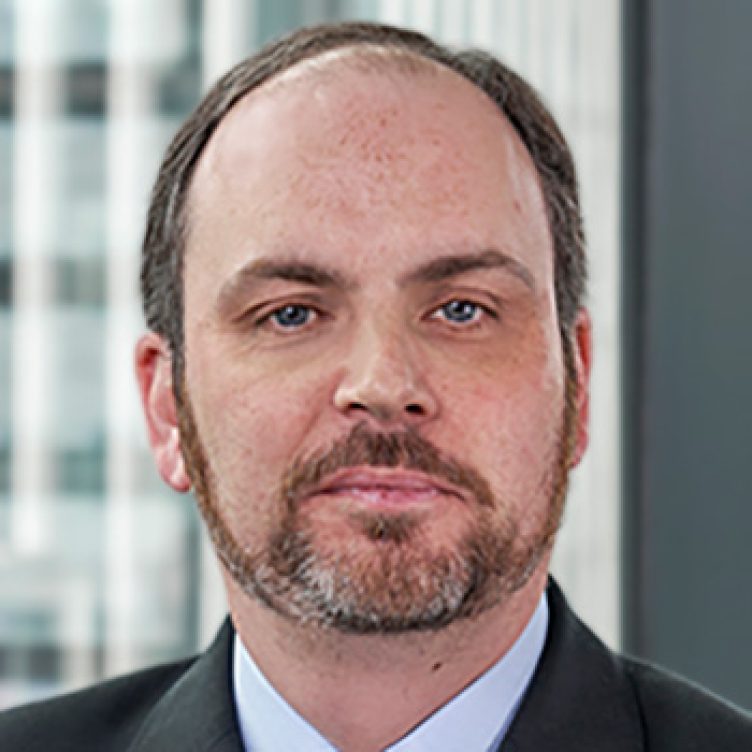(read time: < 10 mins)
This article covers issues relevant to the authors of quantum expert reports, whether medical condition and prognosis reports or non-medical quantum reports. The purpose of this article is to consider the medical causation issues relating to the quantum of a case. In particular, it considers the issues that arise where the claimant’s situation is such that it is not clear what has caused the injury (or aspects of the injury) that gives rise to the claim, and how to deal with those issues.
This article comes from the standpoint of those representing claimants. Although experts have a duty to the court and not to the party paying their fees, we consider how expert opinion can be used by a claimant to maximise his or her damages.
First principles
It is worth reminding ourselves of the basic principles enshrined within the Civil Procedure Rules (CPR) in respect of expert evidence. The key points are:
- The expert writes the report for the benefit of the court, and not for the party paying them to do so;
- The expert should only comment upon matters within their own expertise.
It should always be remembered that the CPR requires the court to allow expert evidence only where it is required. To quote the rule at CPR 35.1:“Expert evidence shall be restricted to that which is reasonably required to resolve the proceedings.”
Where “causative quantum” is concerned, the court will need to be persuaded that an expert is required to advise as to what is claimable as a result of the negligence that has occurred.
Medical issues as to causation can be significant in serious injury cases, not just in terms of whether a defendant is liable (in other words their breach of duty has caused an injury for which damages are recoverable), but also the extent to which that negligence sounds in damages, and in some cases to specific heads of loss, as will be seen from the review of some key issues below.
Damages – what will be compensated?
In basic terms, the court will, in assessing damages, attempt to put the claimant back in the position they would have been in but for the injury sustained. That, in the case of serious or catastrophic injury, is not possible, and so the court has to decide how best to bridge the gap. The court will be looking to apply what is effectively a reasonableness test to the assessment of damages, and it is that test, on the balance of probabilities, that experts should apply.
Where serious injuries are concerned, the majority of future losses will be made up of the consequences of the injury; for example, the claimant’s loss of earnings or need for care and case management. If, however, there are features of the claimant’s history that may have meant significant needs in any event, how does the court differentiate between them?
Causation of the injuries will, therefore, have a significant role to play, and the claimant will need to prove not only that the breach of duty caused some injury, but that the negligence caused needs in order to recover those sums. This may appear straightforward in a case for an otherwise fit and healthy individual who has sustained a catastrophic injury as the result of an accident, but may be far more complex where there are competing potential causes.
It is important, therefore, to correctly identify the damage that has been caused by the negligence. This will invariably take the form of a two-stage process. The first stage is to establish the injury caused, and the second is to establish the effect of the injury in terms of the claimant’s needs and thus his or her damages.
This article will look at two areas of investigation that may occur.
Acceleration injuries
The first potential area where causation in relation to quantum may be relevant is that of an acceleration injury. An acceleration in this context is exactly that: the claimant has sustained an injury caused by the defendant’s negligence, but the defendant argues that rather than the injury occurring where it would otherwise have not, it has merely “brought forward” that injury.
In such circumstances, if an acceleration is proven, damages would only apply during the period of acceleration, thus significantly limiting the claimant’s recovery. The medical expert’s role here is critical in terms of medical causation.
An example of this type of allegation could be a spinal injury sustained by a claimant as the result of an accident or medical accident, where the defendant seeks to show that the claimant had or would have similar or identical injury, perhaps due to a spinal stenosis or other constitutional degenerative problem such as a prolapsed intervertebral disc.
The expert’s role will be to determine on the balance of probabilities the likely “but for” position in terms of medical causation. The possibilities would be:
- The condition may have been present but entirely asymptomatic, and would have remained so, for the remainder of the claimant’s life.
- The condition may have been present but would have become symptomatic, but would have been alleviated with prompt and appropriate treatment (contrary to what was in fact received).
- The condition may have been present but would have become symptomatic, but in a different way and with different consequences to that which in fact occurred due to the negligence.
- The condition may have been present but would have become symptomatic in the same manner that it, in fact, did due to the negligence, and thus an acceleration has occurred.
An expert’s role here would be to examine the likely prognosis of that individual “but for” the negligence, and to consider what outcome the claimant could have expected. In, for example, cauda equina syndrome cases where degenerative disc disease in any event has been identified, it will be for the expert to consider whether any subsequent symptoms would have led to cauda equina syndrome, not just whether or not the prolapse would have become symptomatic.
Although not an acceleration decision, the decision in Cooper v. Bright Horizons Ltd [2013] EWHC 2349 (QB) is also of note in this context.
In Cooper, a nursery nurse acquired a prolapsed disc and cauda equina syndrome due to, in the court’s decision, a failure on the part of her employer to adequately risk assess her working practices, particularly in view of her history of back problems. In that case, the court found that there were two distinct stages to the injury, and that they would need to be considered separately in their contribution to the overall injury. Further, the court rejected an argument that a history of back problems would have meant cauda equina syndrome in any event, as was advanced by the defendant.
Experts will therefore need to consider each stage of an injury forensically. It should not automatically follow that a pre-existing medical condition means that future suffering due to negligence was unavoidable. Each stage of the process is important; experts should not simply consider the end result but should consider each stage.
Pre-existing injuries and differentiating between them
The second potential issue that will be considered here is the situation where a claimant has sustained injury due to the negligence of a defendant but who are already injured, has a disability or other impairment that was pre-existing and causing loss.
There are a four possible ways that this scenario could manifest, two of which are extremes (that is to say all losses are caused by the negligence or none of them are), but the intermediate positions are that which will be discussed:
- There is some damage caused by the negligence, and that damage is distinguishable on the evidence; or
- There is some damage caused by the negligence, but it cannot be divided.
The recent case of Reaney v. University Hospital of North Staffordshire NHS Trust [2015] EWCA Civ 1119, which was decided in the Court of Appeal in 2015, is helpful in setting out the way that experts should approach a claimant with pre-existing injuries in the first of these two categories.
The facts of Reaney were as follows:
Mrs Reaney was a lady in her late sixties who developed transverse myelitis. Despite treatment, she was left with a paraplegia at T7 level, and consequent needs including the need for care. It was a matter of agreement that this condition was not caused by negligence.
Mrs Reaney went on to have significant pressure sores whilst in the defendant hospital’s care, described by the court as follows:
“During an extended period of hospitalisation, she developed a number of deep pressure sores (grade 4) with consequent osteomyelitis (infection of the bone marrow), hip dislocation, serious contractures of the lower limbs and increased lower limb spasticity. Her seating posture was permanently damaged by the hip dislocation so that she was unable to use a standard wheelchair safely. She was left with a large area of vulnerable skin on the sacrum and buttocks where the pressure sores had healed, but the skin was thin and tethered to the bone beneath.”
The issue for the court was what level of damages could be recovered, given the change in circumstances and given that the needs that already existed were not the fault of the defendant.
Where the needs were clearly identifiable prior to the negligence, the issue will then be the difference in need, both qualitatively and quantitively, between the positions. In Reaney, the negligence was of a separate and distinguishable injury; there was no contribution to the underlying condition (in Mrs Reaney’s case, that of paraplegia). Where the additional need is in quantitive terms only, the additional needs are recoverable. However, where the needs were qualitatively different as a result of the negligence, they would be recoverable in their entirety.
By contrast, the decision in Sklair v. Haycock [2009] EWHC 3328 (QB) dealt with a claimant with Asperger syndrome who had sustained an injury in a road traffic accident.
Prior to the accident, the claimant had benefitted from support and supervision provided by his family. After the accident, he required what was effectively 24-hour care. Again, there was no suggestion that the negligence had contributed to the underlying condition.
The defendant argued that the claimant would have needed such support at the point his carer (his father) ceased to be able to care for him. The court, however, considered not just the need for care, but how it would be provided and on what basis. Considering that the need could be clearly contrasted, the court allowed the full package even beyond the point when “some” supervision would have been required. The court further confirmed a claimant’s right to claim against a defendant in litigation rather than rely on the obligations of a public authority.
The question for the court as a result of these decisions is what has caused the need for the care, and whether that can be distinguished or divided, and whether the need post negligence is quantitively or qualitatively different.
Practical points
For experts, both medical and non-medical, the medical aspects of causation will be important in considering whether the underlying injury can be identified, whether it can be clearly distinguished from the new injury, and if it can, whether the needs that now arise can be quantified.
The first point to make is to remind experts that in the civil courts the balance of probabilities is the standard of proof required. In other words, it is “more likely than not”. Experts thus do not have to be sure, nor do they have to be necessarily convinced. What they have to do is form a view on what is probable and reasonable in the circumstances, on the basis of the available evidence. Courts will make findings of fact, but experts will comment upon what that means for the claimant.
In practical terms, the first step for an expert will be a careful consideration of the history. Any opinion given will need to be based upon as clear an understanding as is possible of what the claimant has endured to date and how it has affected his or her life and capabilities at that point.
A further point in this context from the judgment in Cooper is that the court made a point of noting that medical records and history are not always written down by practitioners for the purposes of future litigation (quite understandably). The experts will need to unravel that history and use their clinical experience to try to predict (again, on the balance of probabilities) what would have happened but for the negligence. The decision in Cooper made reference to how sometimes the medical records simply will not be detailed enough, but experts must use their clinical judgement to identify the key points.
Thereafter, a clear understanding of the claimant’s needs, in their entirety, needs to be identified. At that point, on the basis of Reaney and Sklair, experts will need to identify how the need differs from the position but for the negligence. The decision in Reaney very clearly demonstrates that claimants who are able, with the assistance of experts, to set out how their need for, for example, care and support, has changed rather than merely increased, will be in a better position to argue for recovery of damages to cover those needs.
The facts of a particular case may also distinguish between heads of loss; for example, a subsequent negligent act may give rise to a need for care, but the claimant’s ability to work is unaffected. An otherwise able-bodied and non-injured claimant perhaps would not have such a distinction applied. If that can be clearly distinguished, and again, the change in need clearly identified and costed, the claimant will be in a good position to argue that it is more than simply a material contribution to an existing need, and thus the defendant should provide damages for those needs.
You can find further information regarding our expertise, experience and team on our Personal Injury pages.
If you require assistance from our team, please contact us or alternatively request a call back from one of our lawyers by submitting this form.
Subscribe – In order to receive our news straight to your inbox, subscribe here. Our newsletters are sent no more than once a month.






